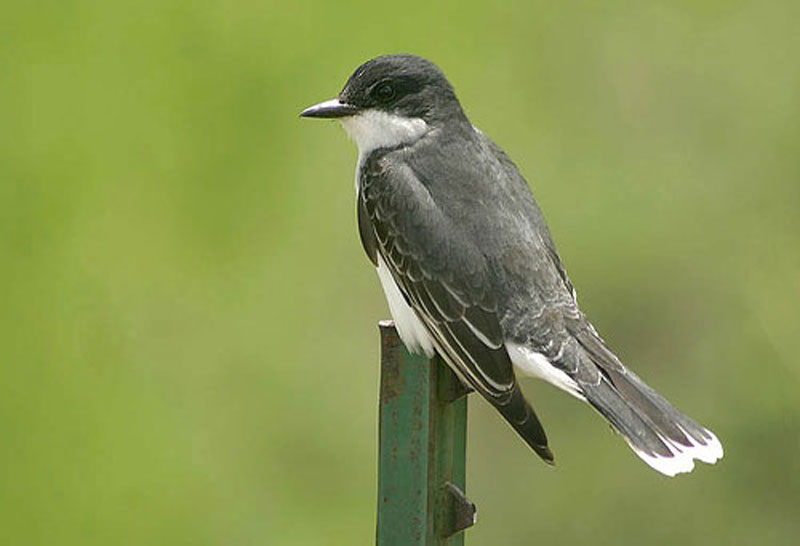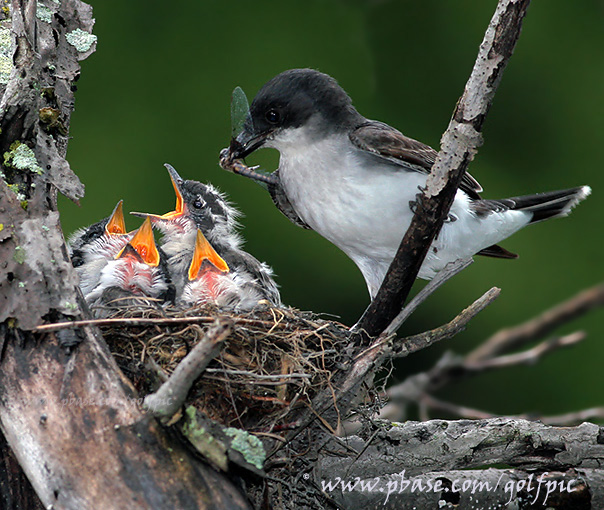Eastern Kingbird
The Eastern Kingbird nests in Northern America and is known for its militant nature. Even the Latin name – Tyrannus tyrannus gives a hint of how aggressive this bird can be. No need to worry, though, as these birds will only show their truculent nature when something threatens their nests.
These medium-sized birds are dark gray to black, while their underpart is usually white or light gray, while their long tail is black, with a white end. There is a spot of red feathers on top of the Eastern Kingbird’s head, but it is only visible when the bird is in discomfort, with its feathers ruffled, somehow reminding of a vein bulging on a person’s head when they are angry. Eastern Kingbirds can reach up to 20 cm in length, making them quite large for flycatcher birds.
As all Tyrant flycatchers, Eastern Kingbirds sit on a high vantage point and take off occasionally, to catch flies that are passing by. The Kingbirds rarely fly long distances when they’re feeding and they mostly wait for prey to fly closer to them. The bird’s diet consists mostly of flies, though other insects and even bees or locusts are sometimes hunted. It also seems, that the Eastern Kingbird is immune to the bee’s poison.
In winter, these birds migrate South, to Central and Southern America, where the climate is warmer. In their wintering places it is not uncommon for them to live in large swarms. Multiple thousand Eastern Kingbirds can spend their winter at one place, showing no sign of aggression, contrary to their behaviour in nesting areas.
After returning from their wintering places, males start fighting for territory. The winner starts attracting females with acrobatic tricks and singing. According to many people, the mating song is quite unpleasant and can be compared to the sound emitted by an electric fence. After a female is found, both birds make a typical bird nest composed of branches, leaves and grass in trees or other higher positions.
16-20 days after laying eggs, three to four birds hatch. Both the parents raise hatchlings, bringing food to the nest and protecting it from any strangers. In two to three weeks the young learn to fly, but the parents still feed them for a few weeks. When the next winter migration comes, the young birds leave their parents’ nest forever and make an attempt to find a mating partner in the next season.
American natives called these birds “little leaders” because of their courage and ferocity when protecting their nests. The Eastern Kingbird will attack any bird that wanders in its territory, even if the bird is much larger than the Kingbird. Their aggressiveness has made the Eastern Kingbird the most common bird of its kin and therefore is not endangered in any way.



